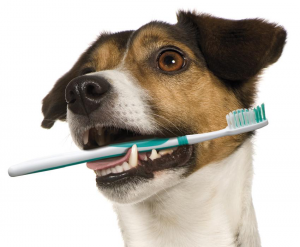3 Mistakes to Avoid to Successfully Potty Train Your Puppy
By Dorothée Pâris Pasturel • 28 January 2022
When it comes to potty training our puppies, we tend to listen to everything we hear online and from those around us. However, by doing so, we can unintentionally make things worse and slow down a puppy’s learning process. It is therefore important to know the basics of canine behaviour and to be equipped with good advice that puts the animal’s well-being first. Here are 3 mistakes to avoid if you want to successfully potty train your puppy:
1. Leaving your puppy alone all day in a crate, without training and without an adaptation period.
The first reason being that your new puppy can only physically hold it for about the number of hours of his age in months. So a 2-month-old puppy can hold it for 2 hours. That being said, a 2-month-old puppy really shouldn’t need to hold it for more than 2 hours. You can use the principle of hours and months as a guide to help you better judge how often your puppy needs to go out and decrease the number of accidents in the house.
This guide for the physical retention of a puppy can be applied until about 6 to 8 months of age. However, you should also take into consideration that every puppy is different and that the speed at which your puppy develops can vary greatly depending on his size, breed and individual growth.
Remember, not only is your puppy unaware of the “right” and “wrong” places to relieve himself, but his ability to physically hold his bladder is not very good (and that’s okay!) A puppy’s behaviour is immature, but so is his body!
Another reason to avoid this scenario is that it could trigger several behavioural problems. In other words, forcing a young puppy to be alone for several hours in a small space, when he has just been separated from his family, without having the opportunity to relieve himself without soiling himself, can cause behavioural problems… This can be difficult for a puppy to live through and can be traumatic.
Common problems in puppies left alone for long periods of time, without an adaptation period and without crate training, are:
- Separation anxiety (the puppy can’t stand being alone; he barks, howls, destroys and has anxiety attacks while alone).
- Crate aversion (the puppy doesn’t like his crate at all, refuses to go inside, runs away, breaks the crate and sometimes hurts himself in it).
- Difficulty settling and concentrating outside the crate; intense demands for attention (excessive nipping and jumping).
- Uncleanliness in the crate (the puppy gets used to doing his business in his crate).
Alternative solutions:
In the end, there are several possible solutions to help a young puppy with potty training, without leaving him in his crate for long hours at the beginning of his training:
- Ask a neighbour or family member to help take the puppy out when you are away.
- Contact a professional pet-sitting service to take your puppy out when you are away.
- If your job allows this, ask your employer if you can work from home for the first few weeks with your puppy to make it easier.
- If possible, schedule your vacation at the same time you adopt your puppy so you can spend more time with him.
- Use a baby gate or fences so the puppy is not completely confined, but still doesn’t have access to the entire house.
- A crate can be a great tool for many reasons! It just needs to be integrated gradually and without force so that it can be used in a healthy way for the puppy. Here is an article on crate training by Stéphane Ficet, a dog behaviourist from De La Main à La Patte.

2. Rationing or limiting the amount of water offered to the puppy.
Limiting a puppy’s access to water is unfortunately a piece of advice that we still hear when it comes to potty training tips. It seems like a logical solution, but in the end, it’s not a good strategy at all! Here’s why I never recommend it…
Offering only a limited amount of water can seriously harm your puppy’s health! A young puppy who does not have free access to water can easily become dehydrated and amorphous, which can lead to various health complications. Don’t forget that a puppy is a “baby” dog. It’s still fragile and sensitive.
Also, this can lead to an obsession with water. When the water-deprived puppy is presented with water or finds a water source on his own, he will literally gorge himself and fill up. This can lead to consequences as trivial as vomiting his water, but can go as far as emergency hospitalization for “overhydration” (his body is drowned by too much water ingested too quickly).
Alternative solutions:
- Monitor the puppy more closely so you can take him out to pee right after he drinks.
- Move the bowl to a place where you can easily see or hear him drinking.
- About 10–15 minutes after the puppy drinks, take him out because the urge will come quickly!
- The only time it is acceptable to restrict water would be during the night when the puppy is settled down to sleep
3. Chastising the puppy if he slips up and you “catch him in the act.”
A few years ago, it was accepted and even recommended to punish a puppy that had an accident in the house. Since then, times have changed and it is no longer advisable to punish the puppy when he slips up, even if you “catch him in the act.”
Punishing the puppy can have the opposite effect to the one desired and can slow down potty training. Most of the time, punishing the puppy makes him not want to do his business in front of his humans. Basically, you end up with a puppy who hides to relieve himself in the house and refuses to do it outside in the yard when you are there with him… Not very helpful, is it?
Alternative solutions:
- Take your puppy outside more frequently to allow him to relieve himself.
- Keep a diary of the times your puppy tends to relieve himself to get a better idea of his “schedule” of needs!
- Do not leave your puppy unattended.
- Be aware of the signs your puppy gives before relieving himself (e.g., whining, circling, coming to you…).
- Reward your puppy when he does his business in the right place.
- Clean accidents with a non-ammonia cleaner.
- Interrupt the puppy gently when he starts to get ready to relieve himself in the wrong place and bring him to the right one to finish his business.
In conclusion, remember one thing: potty training can take time. It requires patience and calm. Yes, it can be frustrating to have to clean the carpet so often, but rest assured that by respecting your puppy’s needs and limits, and by being consistent and patient, you are giving yourself the best chance of success.
Need help with your puppy’s education? We offer kindergarten classes. Sign up now!
Article written by Émilie Malin, behaviourist at Proanima.




Leave a Reply